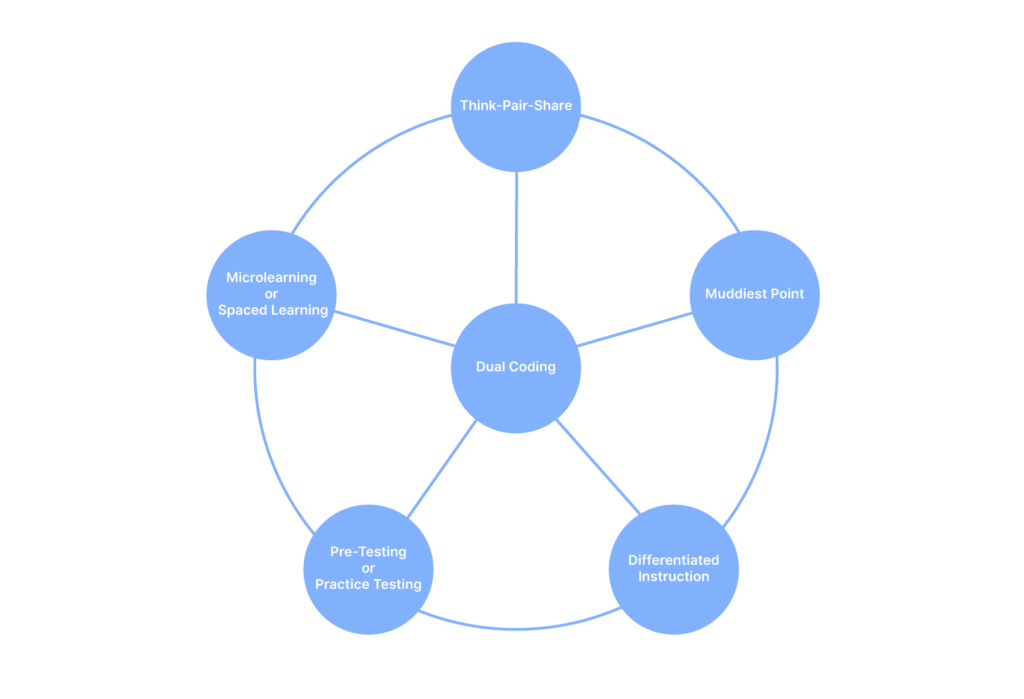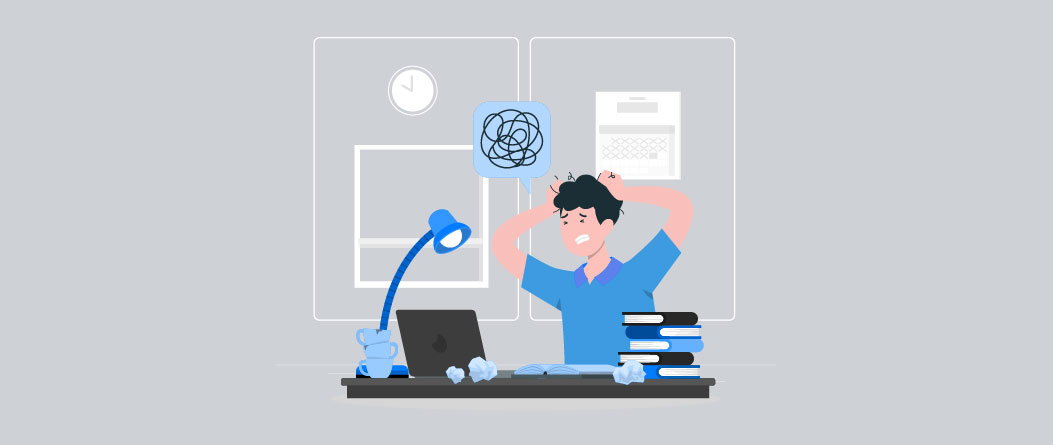Did you know almost 80-95% of college students procrastinate, and at least 50% think it’s a problem?
While there can be different reasons for this behavior, one major reason is a lack of motivation or even anxiety. Some students can’t bring themselves to start working because they’re not interested or because they’re too stressed thinking of how difficult their task is. In some cases, they can’t start because they’re perfectionists and don’t think they’ll be able to do it well.
Anyway, students need an effective learning strategy that works best for them. Now, this is easier said than done – we agree. And that’s exactly why it’s important to look into the most effective learning strategies for students and find one that actually works for you.
We came up with our top 6 most effective learning strategies for college students so you can dive right in!
How Effective Are Study Techniques?
We know what you’re thinking: does it really matter how I’m studying so long as I do it?
Well, the short answer is yes. Study techniques matter because they can help you improve your learning comprehension and retention, which means studying faster and better grades in the long run. The important thing to note here is that effective learning strategies for students won’t be the same for everyone. Their effectiveness will vary depending on the student’s unique learning behaviors. So, just because notetaking or underlining works for some students doesn’t mean it will work for you, too – BUT you won’t know until you try!
A Stanford-based study found college students using strategic approaches to studying significantly improved their grades, which emphasizes the importance of trying different ways to learn. Our advice? Play around with different learning strategies to see what works best for you.
Effective Learning Strategies for College Students
Here are our top 6 effective learning strategies for students:

#1 Think-Pair-Share
“Think-pair-share” is a 3-step active learning strategy that helps you build on your knowledge about a particular subject. It works by helping you organize your thoughts, linking them with your existing ideas, and sharing or discussing them to actively process this information.
‘Think’ means taking a moment to ponder a new concept and maybe even making notes to organize your thoughts.
‘Pair’ involves partnering up with another student or friend to share ideas about the topic and maybe even form new connections (between ideas and concepts) in the process.
‘Share’ requires students to share their key findings with larger groups or the entire class, which ultimately means you get exposed to different perspectives – a surefire way to help your brain remember better.
Online learning platforms for students, like SimpliTaught, promote this concept of student learning through it’s global chat feature. Students and educators can share notes and discuss various aspects of the books they’re studying in the chapter-specific chat rooms on the platform. This allows them to share their thought process, get answers to questions, and even stimulate discussion around a specific topic they’re interested in.
#2 Muddiest Point
Another effective distance learning strategy for students is what we call the muddiest point. For this technique, students identify the lesson’s most difficult or confusing parts. They can do this by rating different parts of their learning material – or simply by identifying the parts they don’t understand. It can be a lot of work, but it’s generally a useful technique because it’s very result-focused. Once students identify the parts they need to focus on, they can actively work to become better informed and better grasp the core concepts in their textbooks. (This is an especially important solution for students skipping classes.)
Using an eLearning platform for students, these students can reach out to educators with their questions and get answers in real time through live chat and video conferencing. But that’s not all. This technique is also helpful for instructors because it can help them get student feedback on content so that they can make the decision to adjust it accordingly. In fact, a new innovative platform, SimpliTaught, has a machine learning model that records student learning behaviors and interactions with the content, which can be really helpful for instructors to analyze the effectiveness of the content they are providing.
#3 Differentiated Instruction
Students have different learning behaviors, meaning we don’t all learn the same way. Differentiated instruction acknowledges this and attempts to accommodate unique learning behaviors through adjusting the learning material, learning process, and overall learning environment. These accommodations might be somewhat limited in traditional classroom settings, but online learning platforms use technology to successfully implement multi-modal teaching. This helps each student understand how they learn best and is an especially effective learning strategy for students with disabilities since it adapts the content to their specific academic needs.
#4 Pre-Testing or Practice Testing
Pre-testing or practice testing is when you test yourself on the material you learned through practice questions or discussions with your peers. For students taking competitive exams like the GRE or MDCAT, mock tests are a common practice because they help them retain the material and get used to the test pattern. eLearning platforms for students (like SimpliTaught) support students with pre-testing or reviewing material through their Exam Library feature, where students can store their most important notes and study materials to instantly review before an exam.
#5 Microlearning or Spaced Learning
Are you one of those students who think working hard means studying for hours?
Well, we have news for you: studies show that keeping your study sessions short with lots of breaks in between is actually good – we’re not even kidding! The thing is, we have short attention spans, which means we can’t focus for more than 10-15 minutes at a time. So, your brain stops responding to information every 10 minutes, and taking a short break helps reset it. You can do this by spacing out your study sessions, making schedules, and actually sticking to them. The easier way is to start microlearning, which is defined as learning with study materials that are broken down into shorter parts so that you can cover them more easily.
#6 Dual Coding
Dual coding is what we call multi-modal learning. It combines visual information with text or other content forms like audio, etc. Consuming the same information in different forms helps your brain really get the hang of things. Besides, most people don’t fall into a single learning style category, so learning through various modes is a good idea for everyone. This is also one of the reasons why video content usually generates higher engagement because it combines audio with visuals. Learn more about how SimpliTaught leverages effective learning strategies for college students to help them learn how they learn best! Contact us at info@SimpliTaught.com.



